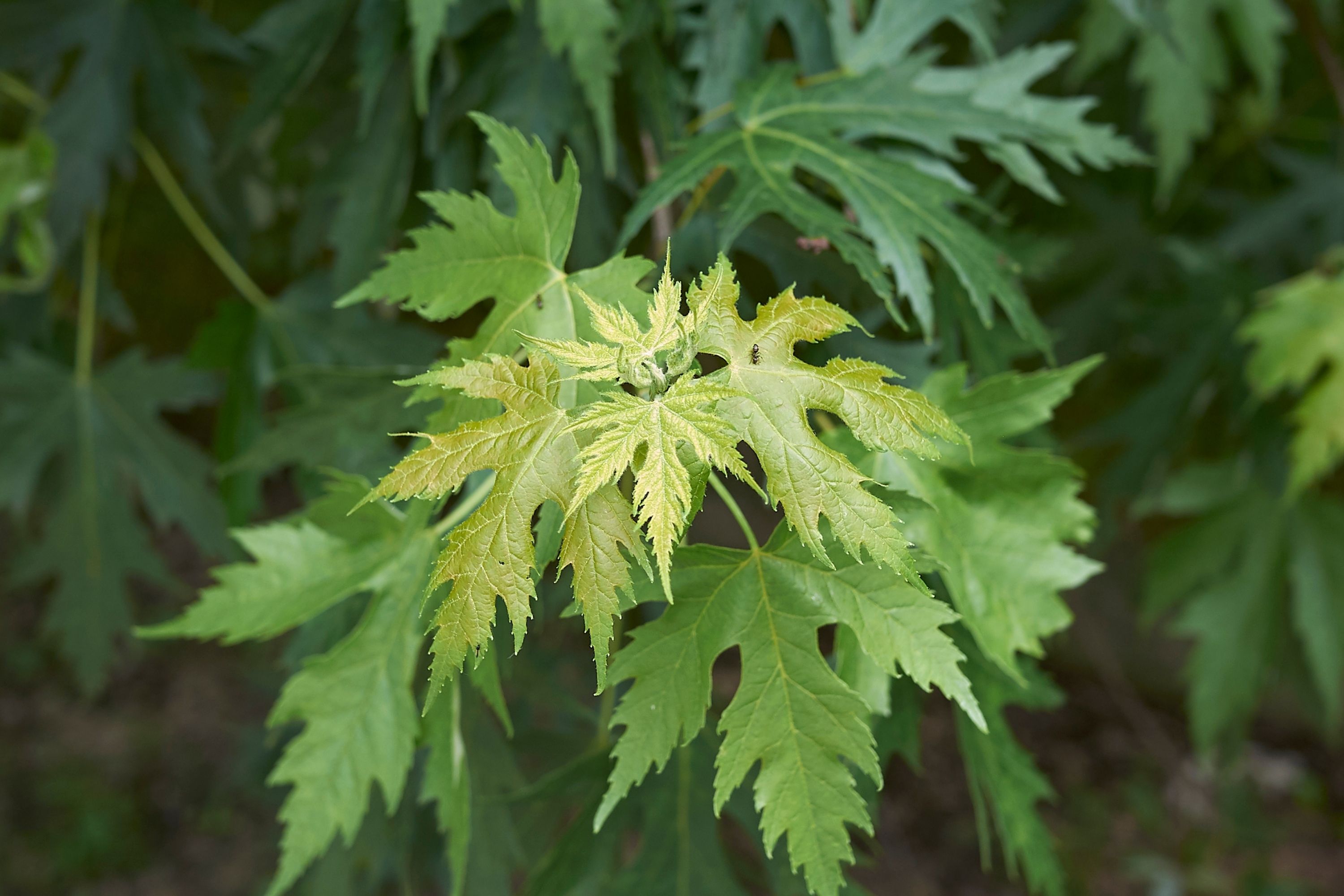Silver maple
(Acer saccharinum)

Description
Acer saccharinum, commonly known as silver maple, is a deciduous tree native to North America. It belongs to the family Sapindaceae and is known for its rapid growth rate and striking foliage. In this article, we will delve into the taxonomy, morphology, habitat, cultivation, and uses of Acer saccharinum. Taxonomy Acer saccharinum was first described by Carl Linnaeus in 1753. The genus Acer comprises approximately 125 species of trees and shrubs, most of which are native to Asia. The specific epithet "saccharinum" comes from the Latin word "saccharum," meaning sugar, in reference to the sweet sap that can be harvested from the tree. Morphology Acer saccharinum is a large tree that can reach a height of up to 100 feet and a spread of 50 feet. It has a broad, rounded crown with branches that extend downward. The bark is grayish-brown and develops vertical fissures as the tree ages. The leaves are opposite and palmately lobed, with five to nine lobes that are sharply pointed. They are green on top and silver-white on the underside, giving the tree its common name. The leaves are up to 7 inches long and 5 inches wide, and they turn yellow in the fall. The flowers of Acer saccharinum are small, greenish-yellow, and appear in early spring before the leaves. They are arranged in clusters, and the male and female flowers are usually on separate trees. The fruit is a paired samara, with each wing measuring 1–2 inches long. The samaras ripen in the fall and are dispersed by wind. Habitat Acer saccharinum is native to the eastern and central United States and southeastern Canada. It is commonly found in lowland areas, along rivers and streams, and in wetland habitats. It can tolerate a wide range of soil types and pH levels, but it prefers moist, well-drained soils. It can also tolerate flooding and drought conditions. Cultivation Acer saccharinum is widely cultivated as an ornamental tree due to its rapid growth rate and attractive foliage. It is also planted as a shade tree and for erosion control. It can be propagated from seed or by softwood cuttings taken in early summer. The tree prefers full sun to partial shade and moist, well-drained soils. It can tolerate some shade but may become leggy and less vigorous. It is relatively drought-tolerant once established but benefits from regular watering during hot, dry periods. Uses Acer saccharinum has several uses in addition to its ornamental value. The sap can be harvested in early spring and used to make maple syrup and sugar. The wood is soft and lightweight, making it suitable for making pulpwood, pallets, and other low-value products. It is also used for furniture, cabinets, and flooring, but it is not as highly prized as some other hardwoods. Conclusion Acer saccharinum is a beautiful and useful tree that is native to North America. Its rapid growth rate, striking foliage, and ability to tolerate a wide range of soil and moisture conditions make it a popular choice for landscaping and erosion control. Its sweet sap is also highly valued for its use in making maple syrup and sugar. Whether you are a nature lover, a landscaper, or a maple syrup aficionado, Acer saccharinum is a tree that is well worth knowing.
Taxonomic tree:







